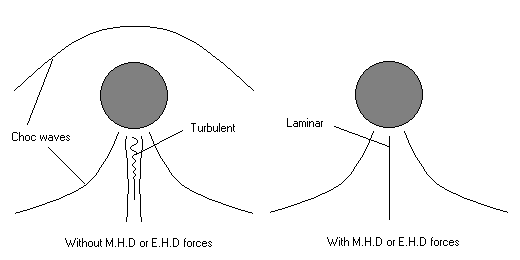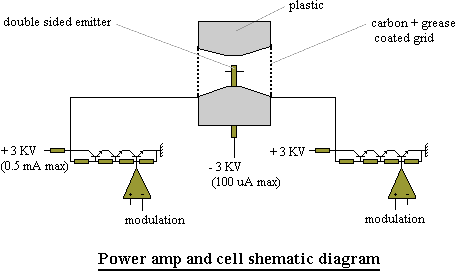
1) Modulated corona
The realizations were principally oriented toward sound production although an experiment as shown that microphones and general high pressure and high frequency sensors may be build using corona glow.
- Headphones
The quite low pressure obtained in a single stage E.H.D. device, in the order of 1 mB (100 Pa), are important in term of acoustic pressure where 1 Pa (= 94 dB) is considered to be a high level sound and 100 Pa (=134 dB) well over the level of pain. The idea of plasma headphone was that only one cell can be used to produce the sound. The study of the plasma headphone was then a first step to the realization of a loudspeaker.
The Audio Reference Plasmasonic headphone was to my knowledge the first commercial application of E.H.D. Despite a pour lifetime of the cell, the performances were quite good: maximum pressure around 100 dB, bandwidth from a few Hertz (electronic limitation) to nearly 20 kHz and this limitation was only due too the performance of the high voltage output stage (3 kVpp) build in the headphone case (for more details, see Plasmasonic page).
The problem encountered in the Plasmasonic headphone was the lifetime of the cell (a few hundred hours) unfortunately the company went in bankruptcy giving no chance of future improvement of the cells. The main difficulty in the case of a headphone cell is to prevent any form of instabilities. If the fluid instabilities were controlled by the choice of a push-pull system (mean flow null), we did not control the electrical stability after a few hundred hours (intermittent noises). These instabilities were probably due to the modification of the profile of the point by migration of matter.
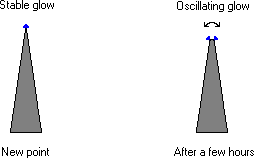
For more details, see the corona instabilities page.
I solved this problem in the prototype a made recently by the use of "Auto stable shape" and the regulation of the sleeping current (to compensate the very little change in electrode distance).
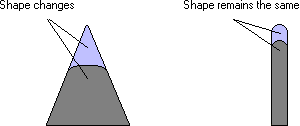
Note that with the use of a cylinder electrode the radius of curvature can be maintained under a certain value and then prevent electrical instability. The prototype of speaker as worked intensively for several months (about 500 hours) without any noticeable change. Now the technology is ready for a commercialization but what about the market?
- Speakers
The development of E.H.D. speaker is correlated to the headphone technology but the difficulties are different. A speaker is composed of a great number of cells. One of the consequences is that the instabilities of different cells are not in phase and their relative importance decrease with the number of cells. This is also partly the case for hydrodynamic instabilities. For higher current (i.e. well developed turbulence) only a light rumbled (mainly composed of low frequencies) is audible near the speaker.
The main problem of E.H.D. speakers is efficiency. A usual speaker has an overall efficiency of about 5 % (which can be increased only by the use of huge pavilions). E.H.D. speakers have up to now very low efficiencies. Pressures of more than 100 dB were reported for power inputs of around 100 W. The poor efficiency of plasma speakers is due to two main reasons:
1 - The first is practical and due to short circuit effect and is well known in acoustic:
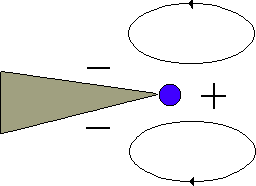
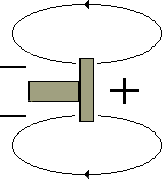
<=>
To prevent this effect you have to baffled the speaker:
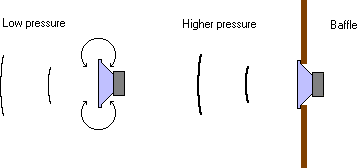
In the case of a corona, it is not easy to do so without interfering strongly with the discharge. Because the main increase of pressure is realized near the strained electrode, the baffle will interfere with the charges before interfering with the fluid (for more see boundary layer control page).
2 - The second reason is more theoretical. In an E.H.D. device the conversion efficiency from electric power to fluid movement is in the ratio of the speeds: Efficiency ~ Vn / Vi , in the case of continuous blowing the speeds of neutrals are around 8 m/s but acoustic speeds are much lower (in the order of a few cm/s). In order to improve the efficiency the cells have to be separated in order to increase the speed in each cell and than to improve the overall efficiency. For more information, see the acoustic theory page.
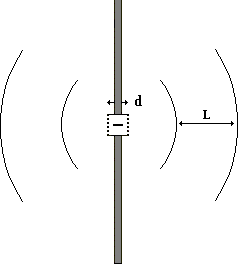
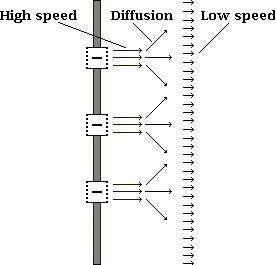
After the bankruptcy of Audio Reference the former manager of the company: Jean-Claude Fourriere was recruited by a company searching for new opportunities: A.H.L. (Acieries du Haut Languedoc) to develop a Plasma Speaker. A few months later the "Tolteque" was born. With an efficiency of around 100 dB at 1 m (for a power consumption of around 100 W) and a very flat and wide response, these speakers were really impressive (and their price too). Unfortunately, the times of High Fidelity is over and everybody seems to be happy now with cardboard and plastic low cost speakers.
On my side, I worked recently on a new prototype integrating new improvements such as a better efficiency a long lifetime of the electrodes (auto stable profile) and a low cost and simple realisation.
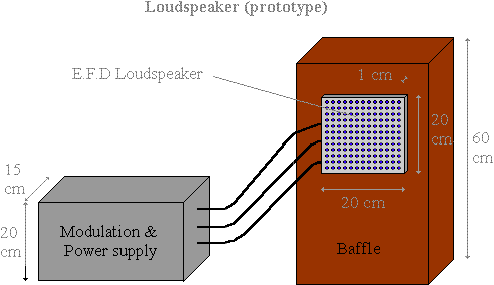
If anyone is interested for the development and marketing of this product let me know.
- Microphones
Only a feasibility experiment was done when I was a researcher in the L.P.D (Laboratoire de Physique des Décharges).

Because of the absence of fragile elements, it is easy to imagine that such sensors may support very tough conditions of pressures, speeds, temperatures...
2) Continuous corona
- Pumps
Some studies were done on the realization of corona fluid pumps (mainly in oil) by an American researcher: A. Robinson. In order to obtain higher pressures Robinson tried to put several stages in cascade but he obtained pour results. Now we know that this was probably due to the instable jet nature of the flow.
- Generators
Some studies were also made more recently in U.S Army lab. The challenge was to realize high voltage, high power generators in order to supply embarked high power Lasers (Strategic Defence Initiative). In such project the corona ions are carried against the field by a supersonic neutral flow derived from or generated by a turbine. The principal is the same as a Van de Graaf or a Wimshurst machine accepted that the carrying media is a neutral fluid. Because of the strategic importance of this work, we didn't know if the project was successful or not.
- Propulsion
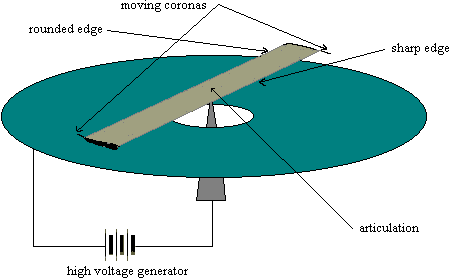
I made investigation on moving coronas to speeds up to 50 m/s (see reference (JAP)). The objective was to show that the force remains constant with the speed and then that the efficiency rises as the speed rises. More recent practical realizations were done under the impulse of Jean. Louis NAUDIN they are of the type upstream propulsion (which is not the best on my opinion) nevertheless several easy to built and very demonstrative realizations have spread all over the world. The thrust obtained is largely superior to the weight of the devices (very small) leading to very spectacular vertical takeoff (see the lifters page). The next stage will be to realize a device able to carry it's own power source. This will probably be easier with a standard horizontal takeoff device. If it's a single stage device, because the maximum thrust is quiet low the wing has to be very long and thin with the lowest drag as possible. These are the objectives of the Advance Reduced Drag Aircraft (A.R.D.A) project of Jean-Louis NAUDIN (see Drag reduction page and J.L Naudin advanced propulsion page).
3) Non conventional realizations
The particularity of E.H.D. forces is that they act in the bulk of the fluid and can then produce new effects. The forces may be concentrated in the boundary layer were very small actions can produce tremendous effects (see photos below).
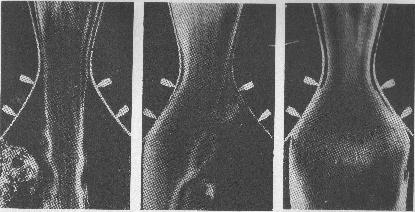
Effect of small suction on a diverging flow
- Drag reduction
In what concern drag reduction, I only know a work of Italian researchers that was not conclusive and was based on the use of symmetric coronas. They used no privileged direction then no electric thrust in order to observe only the drag reduction on a forced flow. Of course in the case of a mobile corona you can only measure the resulting effect (thrust minus drag), but if you assume that the thrust is constant and that seems to be the case even at relatively high speeds of more than 50 m/s (ref JAP), and if you are able to measure the drag in the absence of the corona, you can measure the drag reduction if it's occurs. In the Italian experiment, the flow was turbulent and several coronas were disposed along the flow, which is as we know now not a simple configuration (see Drag reduction page).
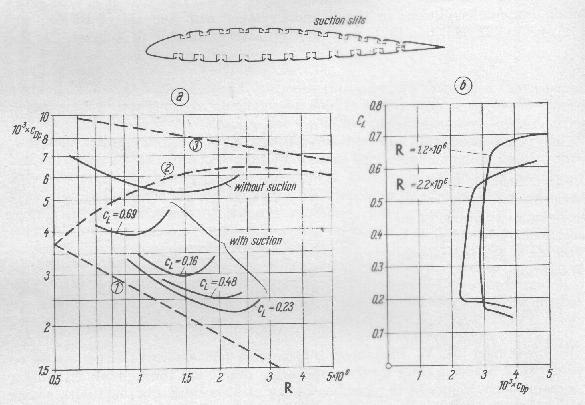
- Shock wave interaction
The first demonstrative experiment of shockwave interaction was first done by Jean-Pierre PETIT more than thirty years ago. He uses M.H.D forces around a cylinder in a forced water flow. In the video that was taken at this times it was clear that in the presence of magnetic forces the front shock wave was totally removed and only backward recompression waves were still visible. The whole story is described in his popular series of Anselme Lanturlu "le mur du silence". Recently, it seems that the N.A.S.A has demonstrate the same principle using E.H.D. on oil (see ref).
